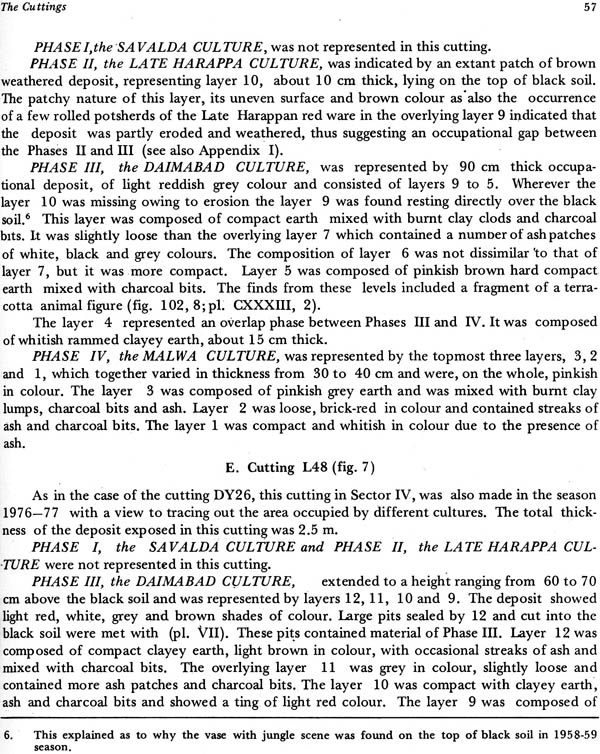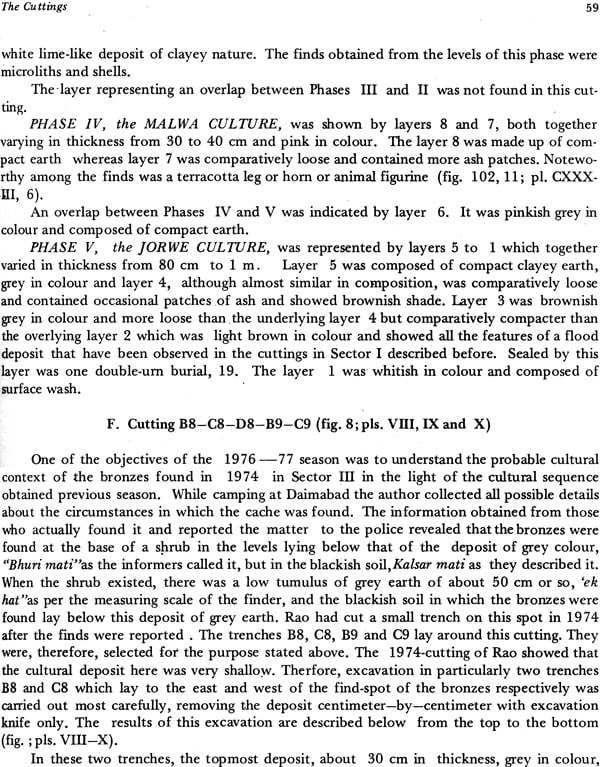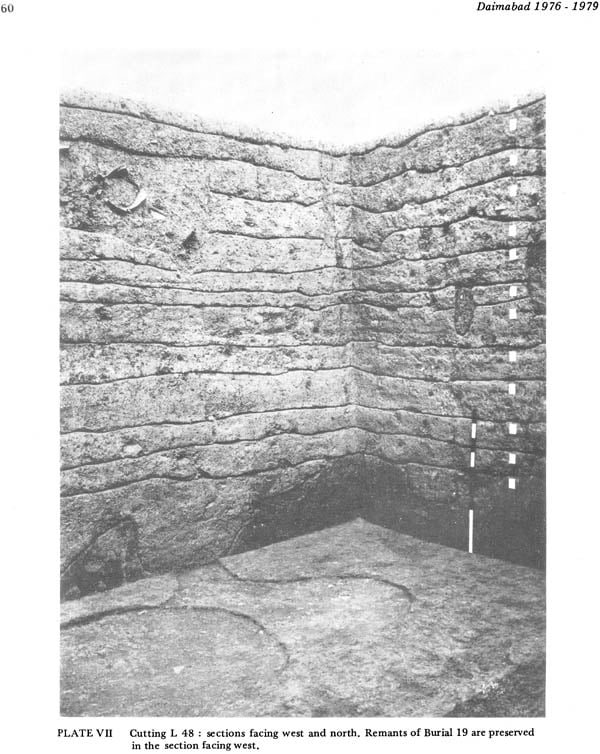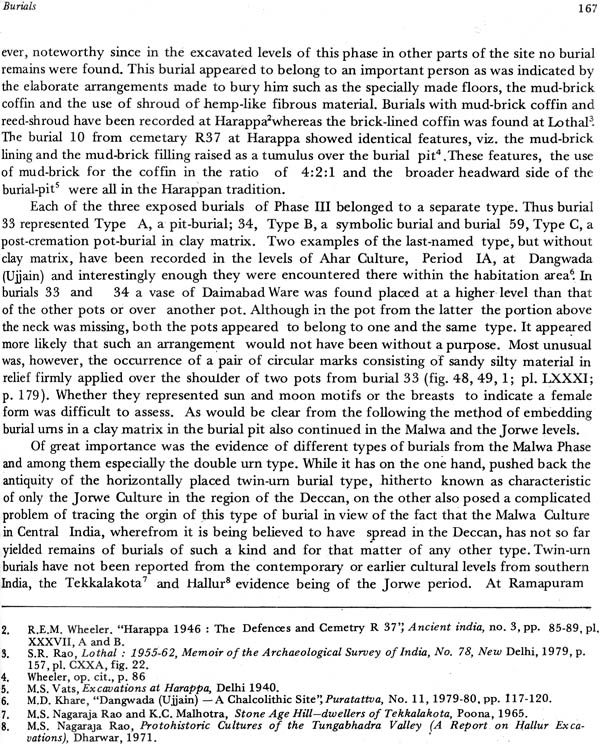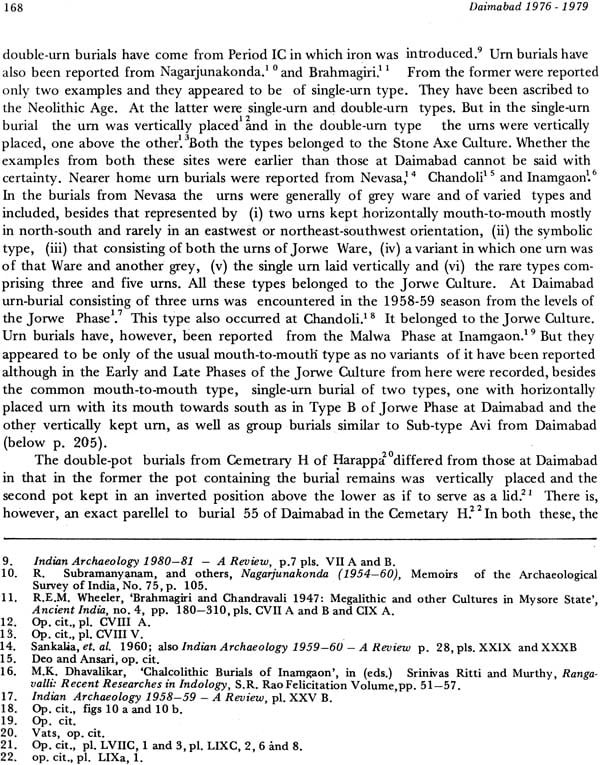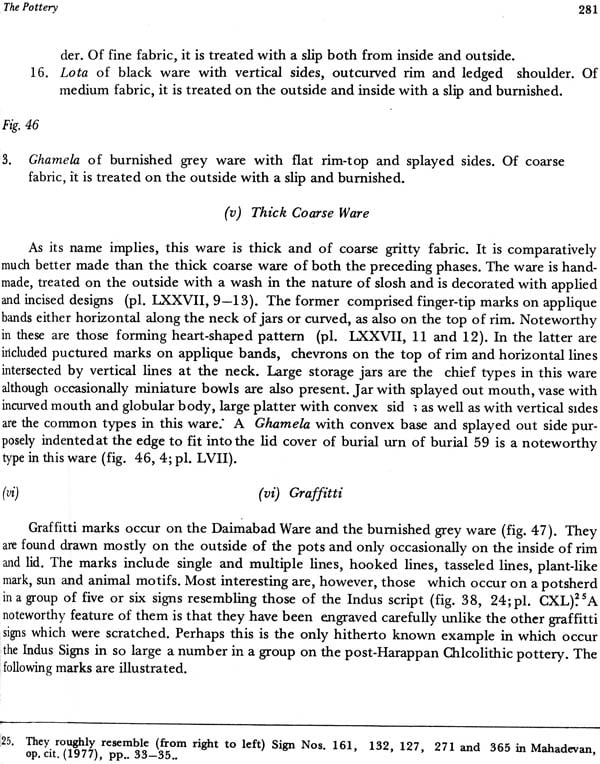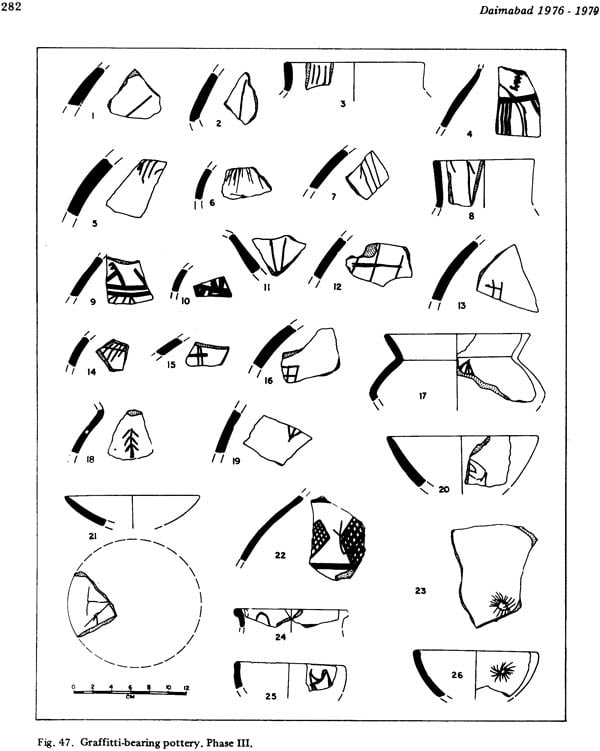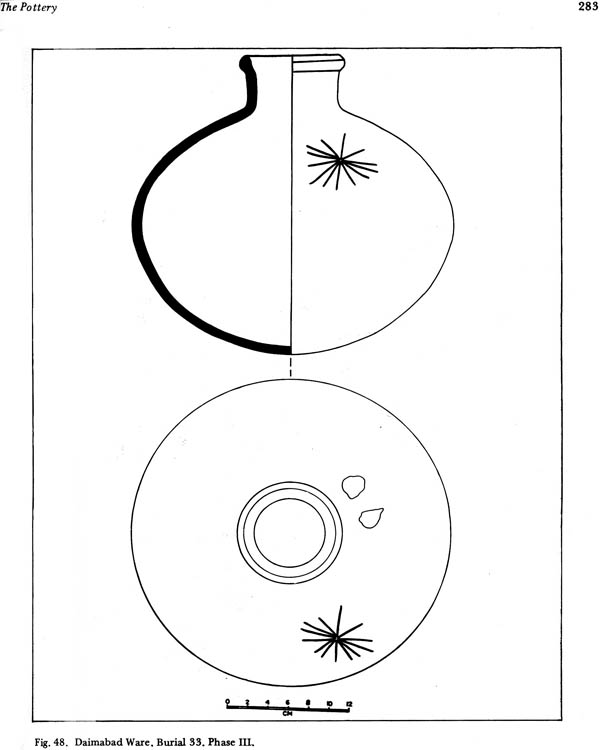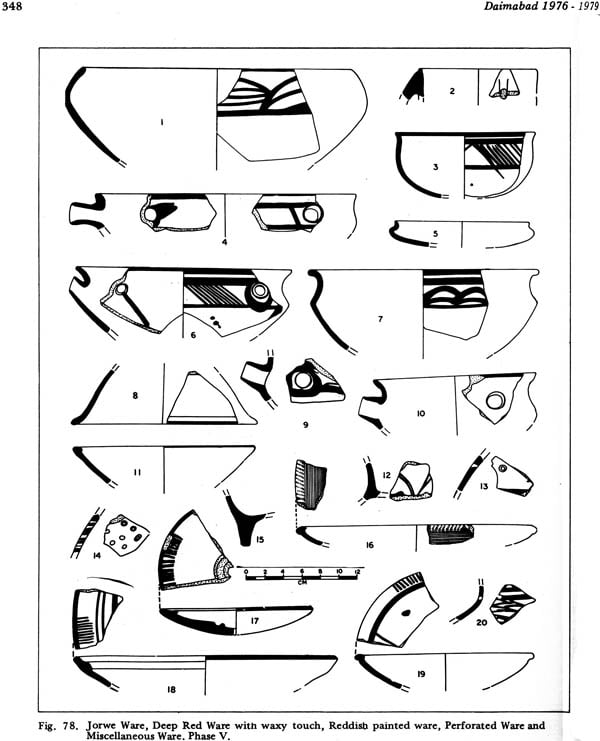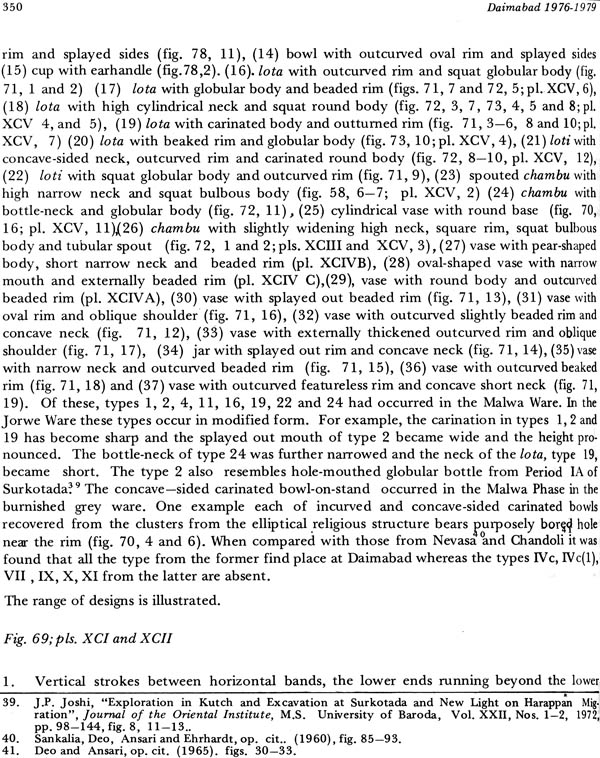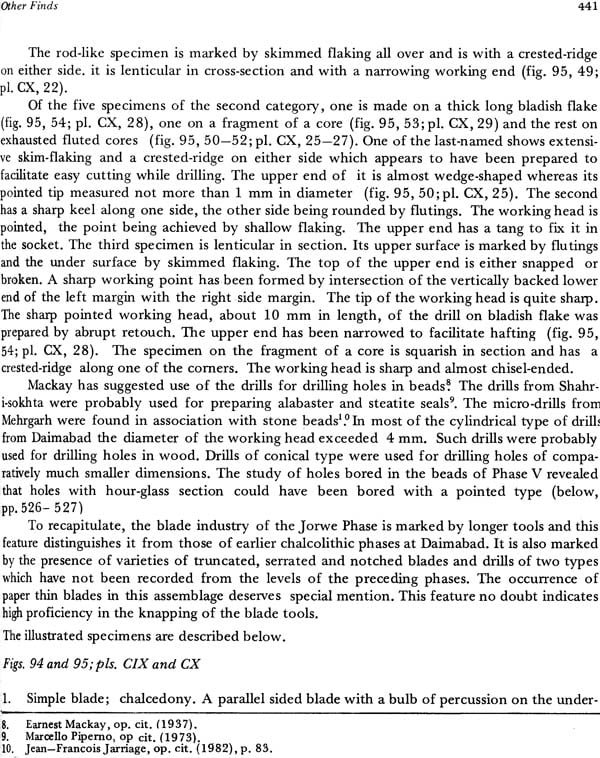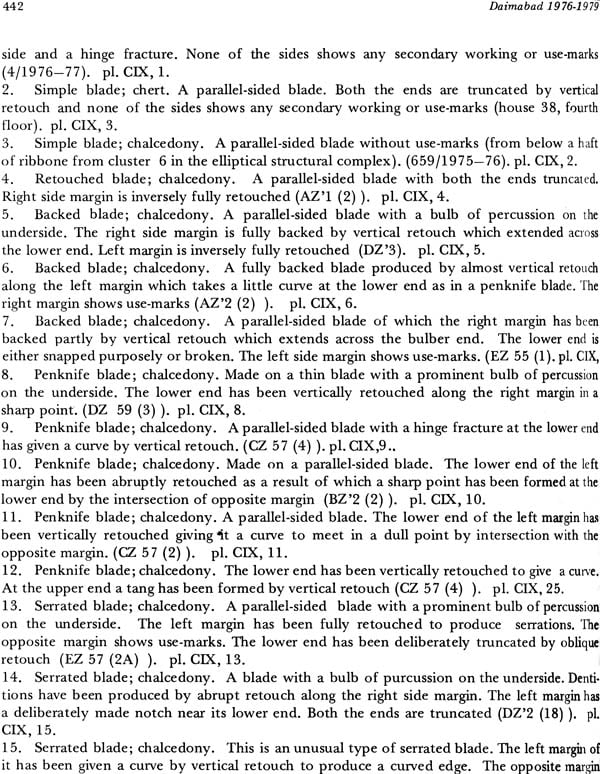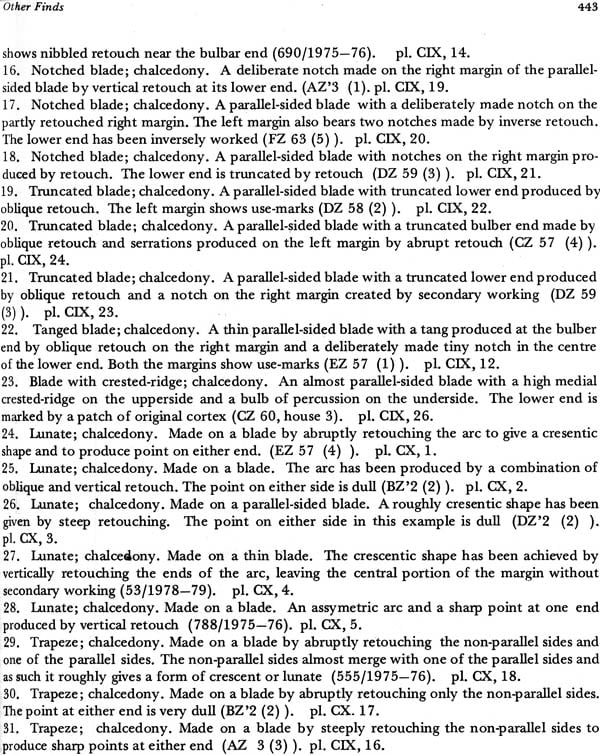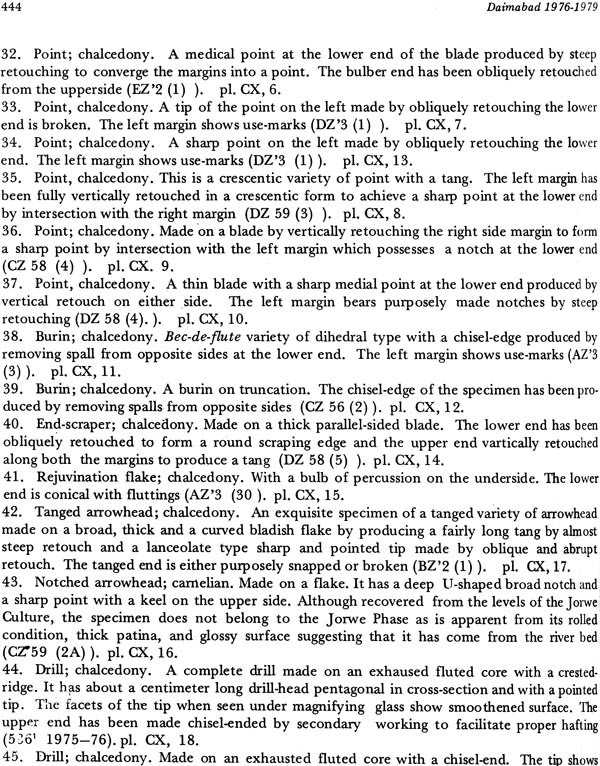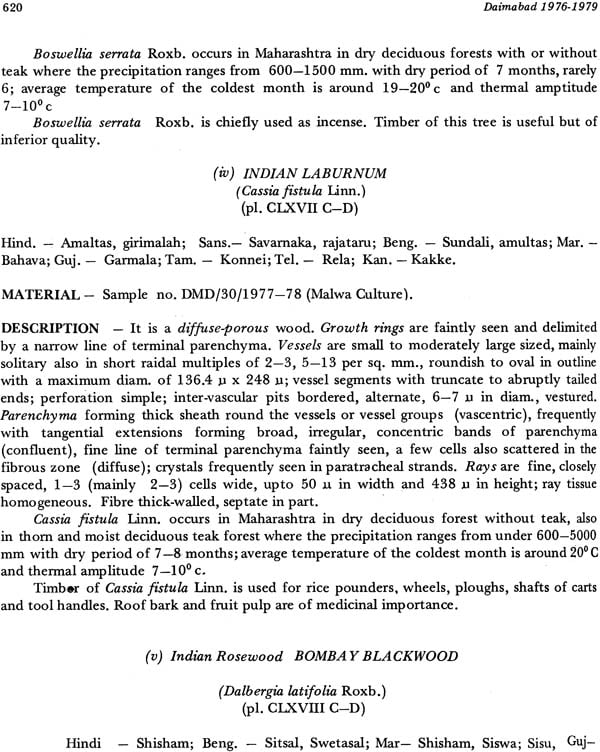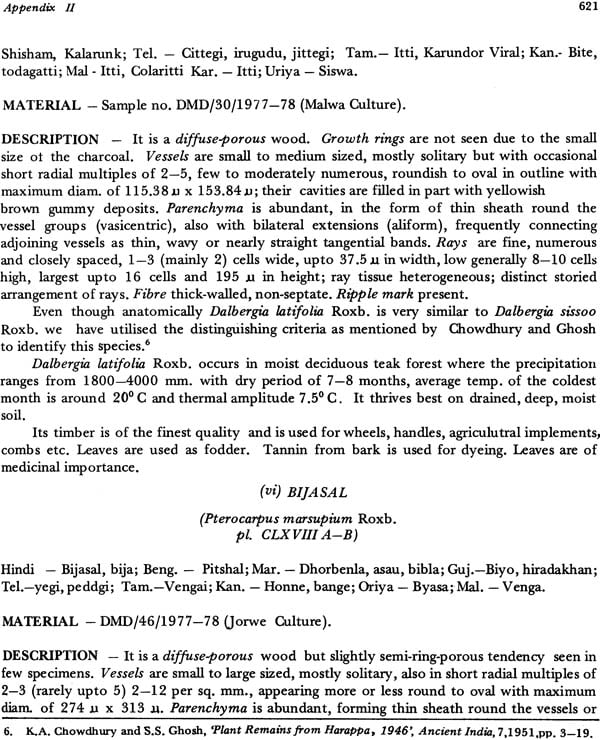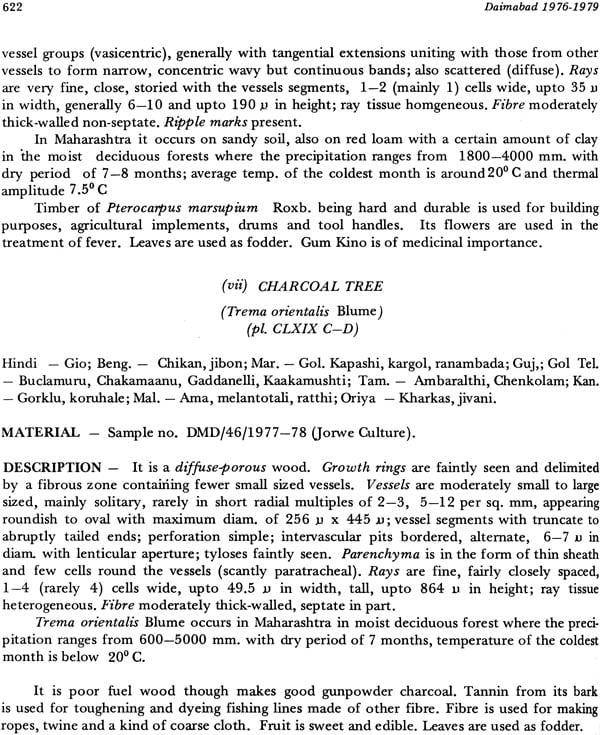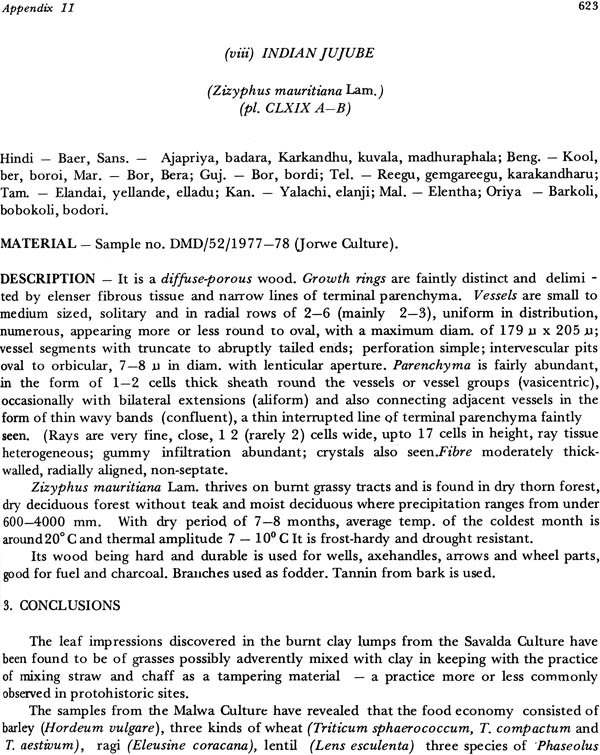
Daimabad 1976-79
Book Specification
| Item Code: | NAL088 |
| Author: | Dr. S.A. Sali |
| Publisher: | ARCHAEOLOGICAL SURVEY OF INDIA |
| Language: | English |
| Edition: | 1986 |
| Pages: | 762 (Throughout B/W Illustrations) |
| Cover: | Hardcover |
| Other Details | 11 inch X 9 inch |
| Weight | 2.40 kg |
Book Description
A number of archaeological sites has been excavated by the officers of the Archaeological Survey of India in the past three decades and more. Unfortunately, the reports of many of those excavations have remained unpublished. Thanks to our Prime Minister, Archeological Survey can do more feel the dearth of funds for its various activities. With the increased budget allocation we have launched a programme of publishing all the pending reports. In this endeavour many of the officers/ excavators have been extending their co-operation. Dr. S.A.Sali is one such officer, who undertook the task of completing the writing of the report on the excavations at Daimabad, for which he was responsible between 1976 and 1979. Dr. Sali deserves our special gratitude, because even after retirement in May 1984, he worked incessantly in a small room at Bibi-ka-Maqbara in Aurangabad and submitted his report in two stages and has seen his manuscript through the Press, the result of which is the present work.
Daimabad is one of the most important sites for the study of proto-historic cultures of India. Discovered in 1958, it was subjected to limited excavations in 1959, which yielded three clear periods of occupation viz., Neolithic, Malwa and Jorwe periods of proto-historic Deccan (Indian Archaeology 1959-60 – A Review, pp.15-18). However, with the discovery of a cache of solid bronze figurines, albeit in an unstratified context, the site at once assumed significance, in the context of extension of the Harappan civilization further south. Hence, Dr. Sali was entrusted with the task of excavating the site horizontally.
The excavations at Daimabad between 1976 and 1979, have made significant contribution to our knowledge. According to the excavator, five periods of chalcolithic culture have been distinguished, viz. the Savalda, the late Harappan, Daimabad, the Malwa and the Jorwe, based primarily on the pottery tradition of the proto-historic folk. The excavator pushes the date of occupation of the site to the beginning of the second millennium B.C. (with correction to C.14 dates as per MASCA calibrations). Be that as it may, the dig has brought out an extremely interesting array of evidence, which helps in reconstructing the life of proto-historic folk in the Deccan till about 1000B.C., when the site appears to have been abandoned. We do hope that this report will help scholars and researchers in interpreting the early history of our people.
In regard to the present publication, I must record my appreciation of the staff of Archaeological Survey of India’s publications wing. Shri K.N.Dikshit, Director, assisted by Shri K.P.Padhy, has been doing his best to clear the pending reports of excavations. Dr. Sali himself has spared no pains, and has come to Delhi for lengthy period of stay, even after retirement, and seen the work through the press, for sheer love of the subject. To all of them, I extend sincere thanks. M/s. Vap Enterprise, New Delhi have spared no pains to produce this attractive volume. I offer them my thanks.
| Introductory | 1 | |
| A | The Problem and the objective of the work | 1 |
| B | Previous Work | 4 |
| C | Acknowledgement | 9 |
| The Site and Its Environs | 11 | |
| The Sequence of Cultures and Chief Characteristics of each culture | 20 | |
| A | Introductory | 20 |
| B | Phase I : The Savalda Culture | 21 |
| C | Phase II : The Late Harappa Culture | 23 |
| D | Phase III : The Daimabad Culture | 26 |
| E | Phase IV : The Malwa Culture | 28 |
| F | Phase V : The Jorwe Culture | 33 |
| The Cuttings | 41 | |
| A | Introductory | 41 |
| B | Cutting CZ52-FZ52 to CZ61-FZ61 | 41 |
| C | Cutting FZ63-FZ64 to JZ63-JZ64 | 50 |
| D | Cutting DY26 | 55 |
| E | Cutting L48 | 57 |
| F | Cutting B8-C8-D8-B9-C9 | 59 |
| G | Cutting A1-A2 | 61 |
| H | Cutting X'3-X'5 to Z'3-Z'5 | 66 |
| I | Cutting X'2-X'1 to Y'2-Y'1 | 69 |
| J | Cutting Y1 | 70 |
| K | Cutting Z'1-Z'2 to BZ'1-BZ'2 | 71 |
| L | Cutting AZ'3-CZ'3 to AZ'5-CZ'5 | 72 |
| M | Cutting DZ'1-DZ'3 to EZ'1-EZ'3 | 73 |
| N | Cutting Z63-Z69 | 74 |
| O | Cutting Z69-Z70 to AZ69-AZ70 | 75 |
| P | Cutting ZD60-ZD62 | 75 |
| Q | Pits | 78 |
| The Structures | ||
| 1 | Introductory | 79 |
| 2 | Phase I : The Savalda Culture | 81 |
| A. Introductory | 81 | |
| B. Structural Phase A | 81 | |
| C. Structural Phase B | 83 | |
| 3 | Phase II : The Late Harappa Culture | 88 |
| A. Mud-brick structures | 88 | |
| B. Mudwall structures | 88 | |
| 4 | Phase III : The Daimabad Culture | 92 |
| 5 | Phase IV : The Malwa Culture | 93 |
| A. Introductory | 93 | |
| B. Strctural Phase A | 93 | |
| C. Structural Phase B | 98 | |
| 6 | Phase V : The Jorwe Culture | 125 |
| A. Introductory | 125 | |
| B. Structural phase A | 125 | |
| C. Structural Phase B | 146 | |
| D. Structural Phase C | 148 | |
| E. Structural Phase D | 157 | |
| F. Structural Phase E | 163 | |
| The Burials | 166 | |
| A | Introductory | 166 |
| B | Description of burials | 175 |
| 1. Phase II | 175 | |
| 2. Phase III | 179 | |
| 3. Phase IV | 183 | |
| 4. Overlap between the Malwa and the Jorwe Phases | 191 | |
| 5. Phase V | 192 | |
| A | Group I | 192 |
| 1. Type A | 192 | |
| B | Group II | 192 |
| C | Group III | 195 |
| 1. Type A | 195 | |
| 2. Type B | 205 | |
| 3. Type C | 205 | |
| Chronology | 206 | |
| The pottery | 212 | |
| A | Introductory | 212 |
| B | Phase I : The Savalda Culture | 213 |
| C | Phase II : The Late Harappa Culture | 231 |
| D | Phase III : The Daimabad Culture | 248 |
| E | Phase IV : The Malwa Culture | 288 |
| F | Phase V : The Jorwe Culture | 337 |
| Other Finds | 401 | |
| A | The stone tool industries | |
| B | The hafted blade | 452 |
| C | Stone Objects | 452 |
| D | Stone sculptures | 464 |
| E | The bronzes | 477 |
| F | Terracotta objects | 479 |
| G | Human figurines in applique on pottery | 496 |
| H | Incised cult object | 504 |
| I | Inscribed terracotta seals and potsherds | 504 |
| J | Terracotta stamp seal | 505 |
| K | Terracotta cylinder seal | 508 |
| L | Sunbaked clay objects | 511 |
| M | Copper objects | 512 |
| N | Beads | 518 |
| O | Shell objects | 550 |
| P | Bone objects | 554 |
| Q | Pottery objects | 564 |
| R | Weights and measures | 568 |
| S | Piece of gold | 573 |
| Contributions and Conclusions | 574 | |
| Appendix I : Geoarchaeology of Daimabad by Dr. S.N. Rajaguru, Deccan College, Pune | ||
| A | Introduction | 580 |
| B | Palaeoenvironmental significance of buried soil and flood gravels | 580 |
| 1. Buried soil | 580 | |
| 2. Flood gravels | 585 | |
| C | Discussion | 585 |
| Appendix II : Ancient plant economy at Daimabad by Vishnu Mittre, Aruna Sharma and Chanchala, | 0 | |
| Birbal Sahni Institute of Palaeobotany, Lucknow | 588 | |
| 1 | Introduction | 588 |
| 2 | Description of plant remains | 588 |
| A. Leaf impressions | 590 | |
| B. Carbonized grains and | 590 | |
| C. Charcoals | 611 | |
| 3 | Conclusions | 623 |
| Appendix III : Chemical analysis sis of habitational deposits and animal bones from Daimabad | 628 | |
| A | Chemical analysis of habitational deposits | 628 |
| B | Bone analyses | 636 |
| Appendix IV : Analysis of Daimabad Bronzes in % | 638 | |
| Appendix V : Percentage elemental composition of Daimabad elephant and rhino samples obtained | ||
| through atomic absorption spectrophoto | 640 | |
| Appendix VI : Palaeodemography of Protohistoric Daimabad <>/b | 641 | |
| Appendix VII : Determination of Firing Temperatures of Pottery of Chalcolithic Daimabad | 741 | |
| Annexure | 745 | |
